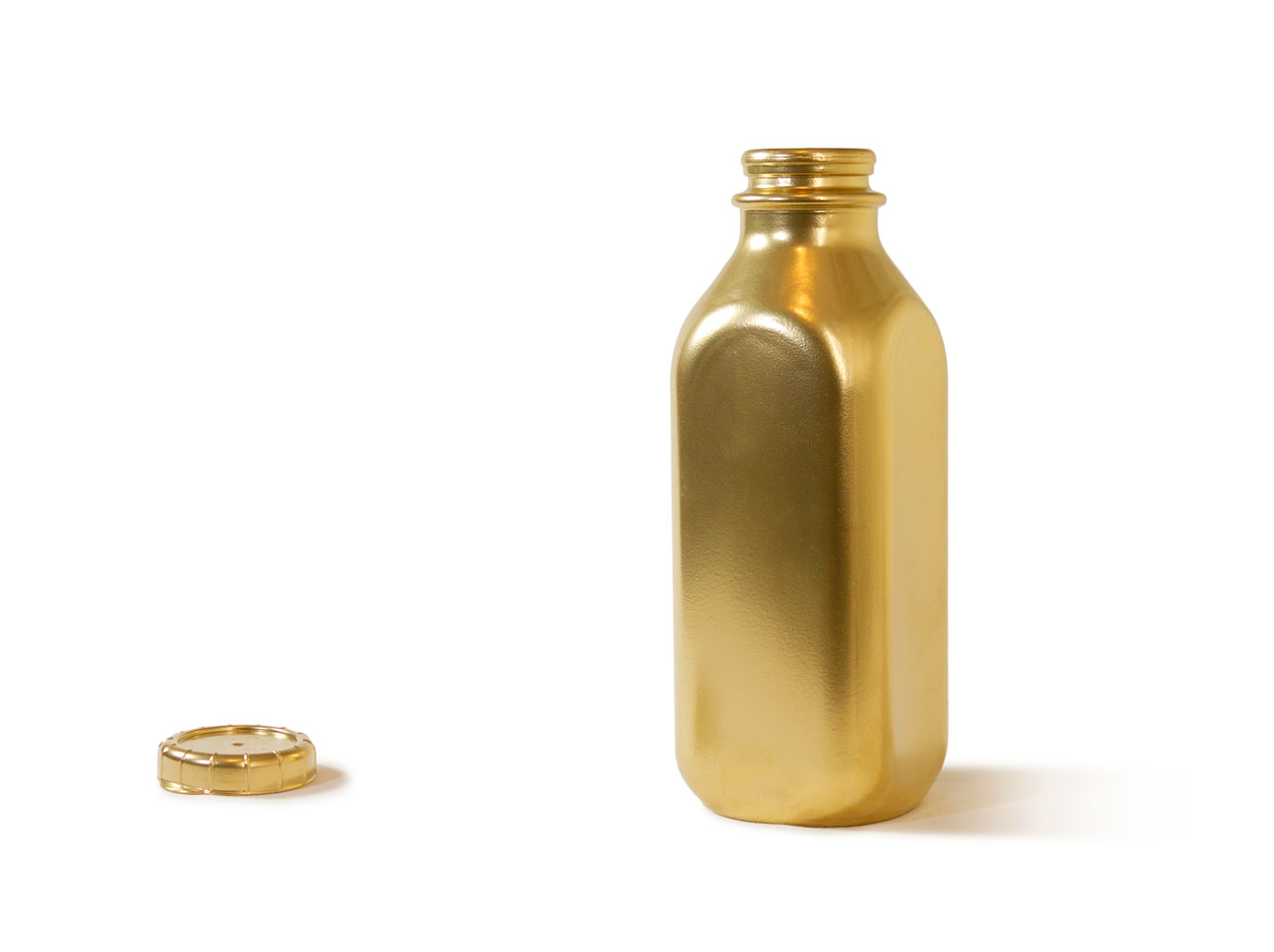
Of Milk and Mountains is an ongoing research-based participatory performance project that explores how the mountain landscapes of Graubünden Switzerland are constructed through an interweaving of sensory practices, folk narratives, and fabricated representations.
In the words of anthropologists Classen, Howes and Synott, "every society has a sensory order, and to every sensory order there corresponds a particular social and symbolic order."1 I focus on two sites that feature prominently in shaping Graubünden’s sensory, social and symbolic order: Swiss alpine dairies and high-altitude sanatoria—and their historical role as settings that elicit curative effects through establishing a therapeutic relationship between people and landscape. I engage with this subject matter through expanded multi-sensory practices of tasting.
I began this project during a 2018 artist program at the Alps Art Academy in the Safiental of Switzerland, a remote alpine valley where the culture and industry has revolved around dairy farming since its settlement in 1250.
1 Classen, Howes and Synott. Aroma: The Cultural History of Smell. 1994: 161
For a topography to become a landscape it needs a story. And in the story of Switzerland’s Safien Valley the primary protagonists are the farmer and the cow.
Landwirtschaft (land economies) is concerned with how milk functions as the center of a biological, symbolic, economic, and cultural world. For hundreds of years milk has been very central to the Swiss alpine imaginary. I’m interested in how the practices of dairy farming shape the idea of the alpine landscape and the stories embedded in it. Since 2018 I’ve been exploring this through performances and sculptures that intervene in and reimagine milk’s chain of production and consumption as a narrative process.
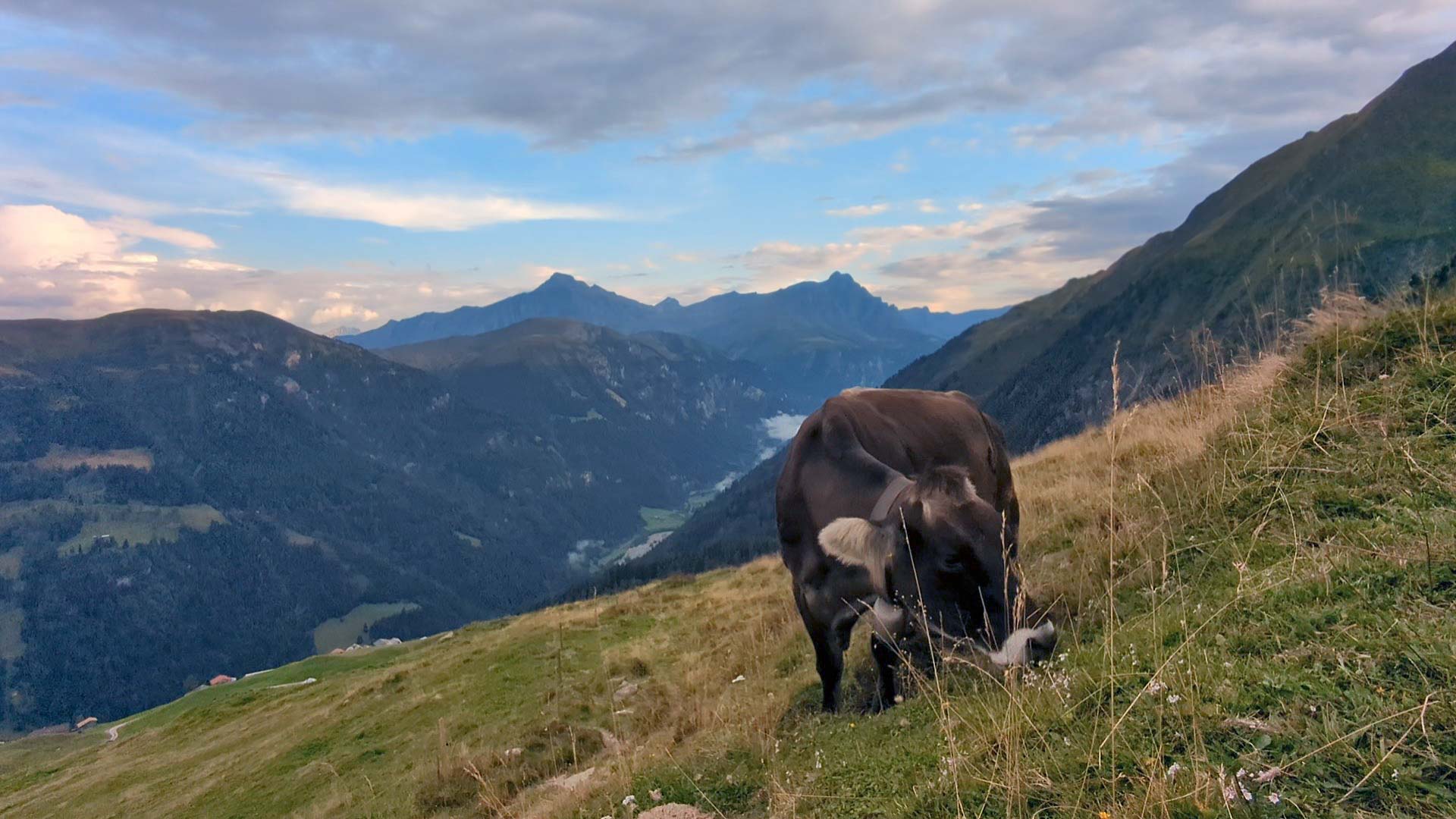
This, we might say, is a form of geoengineering, too—one reliant not on snow guns or dynamite or dams, but on shepherds’ staffs and sheep bells and generationally ingrained ecological knowledge about the landscape.
—Shannon Mattern, “Of Mountains and Machines,” in A Wildness Distant (Columbia GSAPP, 2020)
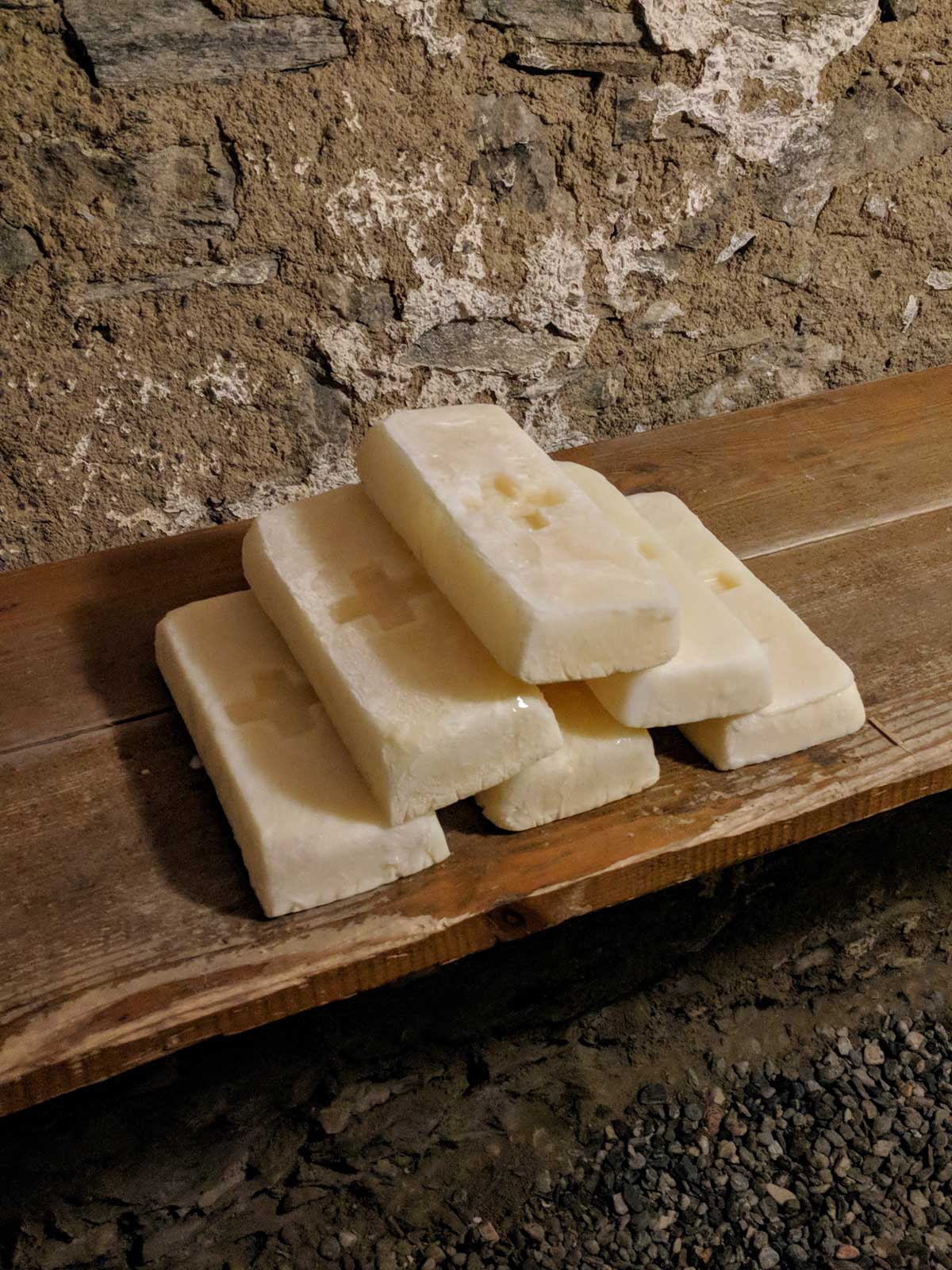
Safiental Land Tasting is a performance that restages the Milchkur (“milk cure"), an alpine raw-milk health retreat common in Switzerland during the 18th and 19th centuries. After ascending through mountain cow pastures lavish with herbs and wildflowers guests are served hors d’oeuvres of local field flora followed by a tasting of fresh milk warm from the udder of Regentin, the Original Schwyzer Braunvieh cow, revealing the astonishing alchemical transmutation that has been shaping the landscape of this valley for almost 8 centuries.
Over the course of my visit to the Safiental of Switzerland during the summer of 2018 I became fascinated by how the production of milk has shaped the culture, economy and topography of that valley. The performance Safiental Land Tasting was produced in an attempt to open an entryway into the material and sensory conditions of this history by bringing participants as close as possible to its most basic underlying phenomenon: the transformation of grass into milk fat.
It was only in the weeks following the Safiental Land Tasting performance that my research led me to realize that in-situ cowshed milk tasting had for centuries been a significant cultural practice in the region of Graubünden. The Milchkur was common during the 18th and 19th centuries with a history dating back to the Middle Ages (Wyder 2003, 74). Initially undertaken as a folk medicine, and later prescribed by doctors to ailing urbanites, people would sojourn at farmsteads in remote alpine towns and consume a diet of raw milk, sometimes even sleeping in the barn with the cows.
video documentation: vimeo.com/298818961

A menu for tasting the landscape of Tenna Graubünden in nine site-specific courses:
1 probiotic hand balm of pasture earth
2. mountain spring water drops on a field of nasturtium shoots
3. rowan berry essence on good-king-Henry herbage
4. root vegetables smoked in bales of meadow hay
5. cairn of flatbread baked on talus rock cobbles
6. raw cow milk from the Alpkäserei Tenner Alp
7. milk fat sublimated into butter ingot
8. buttermilk precipitated from ingot
9. farm fowl rendered into bouillon spirit
The Kurhaus Alpenblick Air Tasting Menu is a menu of daily air degustations from 30 August to 2 September 2022, as experienced on the terrace of the former air cure spa Kurhaus Alpenblick in Tenna Switzerland. The Menu is available to guests at the Alpenblick’s present-day restaurant.


Built in 1902 in Tenna Switzerland, the Kurhaus Alpenblick operated as a climatic health resort and air therapy facility until the Second World War. During a 2022 visit, I assumed the role of an air cure climate convalescent. Documenting my sensory experience of the air on the hotel terrace, I produced a daily atmospheric carte du jour. Framed within the diegetic context of a passage quoted from the Alpenblick’s 1911 promotional publication, the resulting Kurhaus Alpenblick Air Tasting Menu presents a multi-sensory account of atmospheric phenomena integrated through the structure of oenologist Emile Peynaud’s tasting method and the narrative form of a dining menu. Distributed in the Alpenblick’s restaurant, the Menu introduces guests to the local alpine air as a source of nourishment worthy of the same attention that they might dedicate to the fare served from the hotel kitchen.
For more info about “tasting” see What is Tasting?
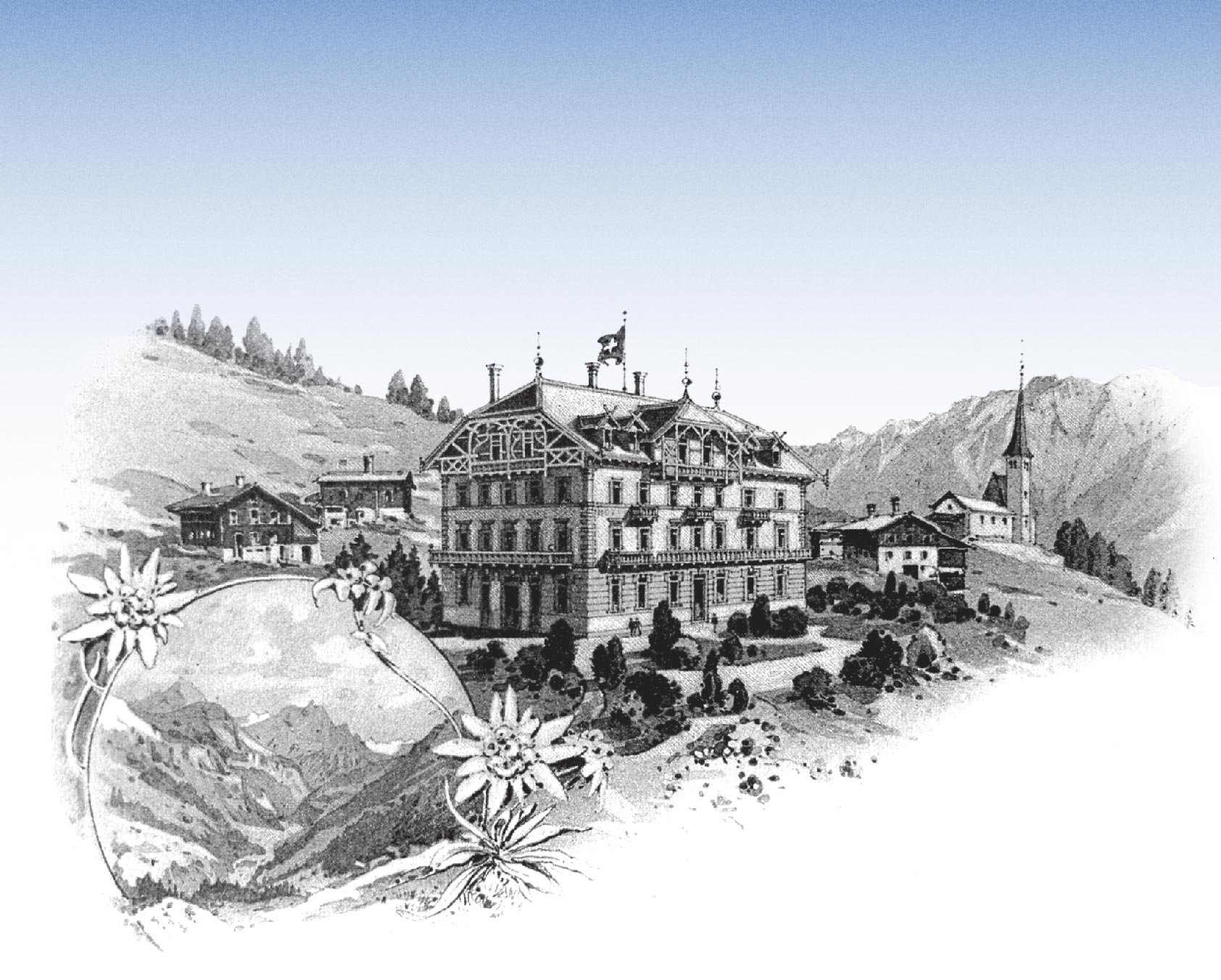
Climatic therapy and the air cure
The idea that climatic conditions can induce healing effects was commonplace since classical antiquity, and Luftbäder (air bathing) was widely practiced as a means to strengthen the body’s immunity against illness, a treatment that found renewed popularity during the Enlightenment.1 In the mid-1800s German and Swiss doctors formalilzed the Luftkur (air cure), or more specifically the Freiluft-Liegekur (open-air reclining rest cure), as the cornerstone of the health regime in Switzerland’s emerging high altitude climatic therapy facilities and alpine sanatoria, where patients would recline outdoors in all weather for 6–8 hours per day. The air cure was the center of a broader regimen modeled on the lifestyle of local mountain residents, featuring intense sunlight exposure, periods of vigourous outdoor activity, and an extensive diet of locally sourced food (often upwards of five meals per day) including substantial quantities of raw milk.
This practice of climate immersion stands in sharp contrast to the pursuit of climate control and air conditioning that came to dominate the late 1900s. My ongoing research proposes that the late-1800s alpine air cure sanatorium functions as a utopian eco-human-hybrid technology; through its regimen of landscape and climate immersion, it elicits curative effects by establishing a therapeutic relationship between the convalescent and the landscape.
1 B. Rüttimann. “Volkssanatorien in der Schweiz.” Schweizerische Ärztezeitung, 81: Nr 49, 2000.

If the air cure is the cornerstone of the alpine climatic therapy treatment, then the Davoser Liegestuhl (Davos recliner) is the cornerstone of sanatorium architecture. This chair was designed so that climatic therapy convalescents can recline in the open air for extended periods of time. Serving as the principle platform for the air cure treatment, it maintains the proper orientation of the body and guides the awareness towards an open vista of air and sunlight. The sanatorium architecture functions as an extension of this seating, built to afford the reclining convalescent maximum exposure to air and light, typically via a facade of stacked balconies situated on a mountain’s southern face and overlooking the valley.
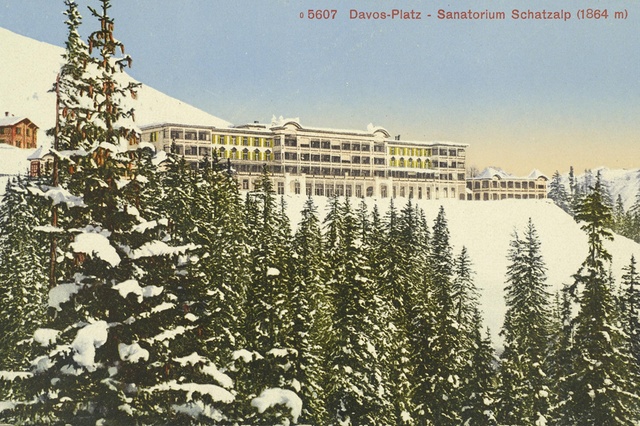
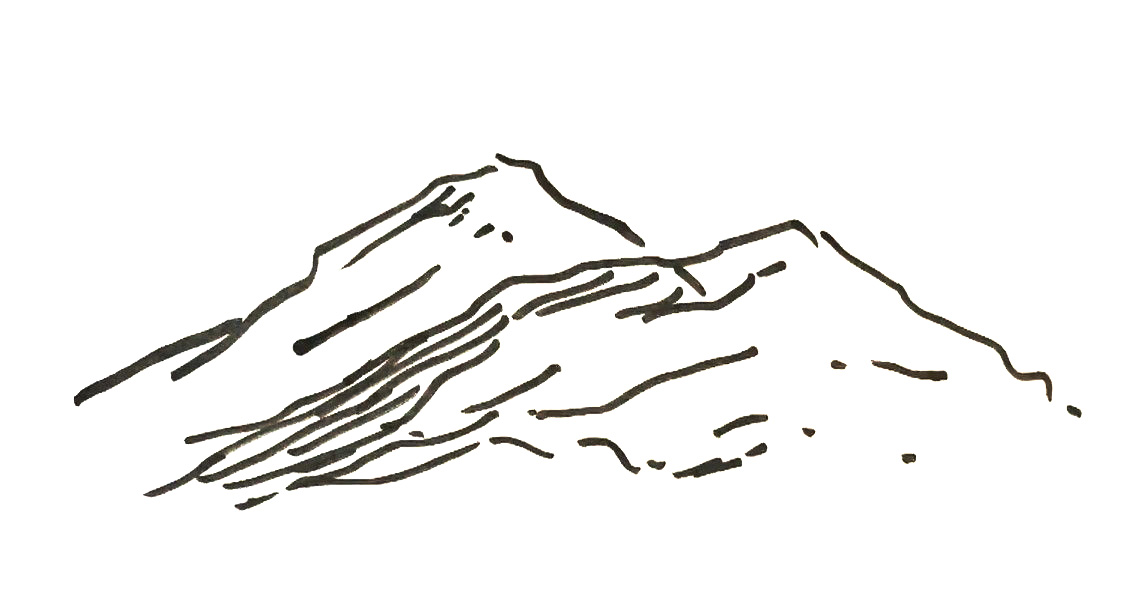
Watching you, my dearest cow
Being milked, I wonder how
It can be that inside you
Grass can turn, if all well chewed,
Into drink as well as food.
It’s a miracle! You do
Distill goodness all for free.
Tell me, human, that indeed
To him who all this has decreed
Now and always glory be!—Barthold Heinrich Brockes, 1735–48
From Hamburg to Davos is a long journey—too long, indeed, for so brief a stay. Space, rolling and revolving between him and his native heath, possessed and wielded the powers we generally ascribe to time. From hour to hour it worked changes in him, like to those wrought by time, yet in a way even more striking. Space, like time, engenders forgetfulness; but it does so by setting us bodily free from our surroundings and giving us back our primitive, unattached state.
A magnificent succession of vistas opened before the awed eye, of the solemn, phantasmagorical world of towering peaks, into which their route wove and wormed itself: vistas that appeared and disappeared with each new winding of the path.
Before them rose a low, projecting, meadow-like plateau, on which, facing south-west, stood a long building, with a cupola and so many balconies that from a distance it looked porous, like a sponge. Behind them, where the valley narrowed to its entrance, the more distant ranges showed a cold, slaty blue.
A wind had sprung up, and made perceptible the chill of evening. And Hans Castorp took in a deep, experimental breath of the strange air.—Thomas Mann, The Magic Mountain, 1924. (Abridged from Chapter 1, Arrival)
Of Milk and Mountains starts from the hypothesis that complex abstract configurations of economics, geography and social relations can be culturally transmitted in the form of particular sensory practices that condense a broad cultural context into a concise and ritualistically composed sensory experience. By describing the history of the Milchkur (a.k.a. “milk cure," an alpine raw-milk health retreat common during the 18th and 19th centuries) and situating it within a historical and geographic context this text demonstrates that the Milchkur can, and has, functioned as a sensory index for deeply rooted and formative historical processes and ideologies that persist within European culture. I propose that by engaging in the Milchkur today one can resurface the continuity and conflicts of this history, making it available to participants in the form of a condensed sensory experience.
Over the course of my visit to the Safiental of Switzerland during the summer of 2018 I became fascinated by how the production of milk has shaped the culture, economy and topography of that valley for eight centuries. Restaging the Milchkur I created a tasting session where visitors could experience the astonishing alchemical transmutation of grass to milk. After ascending through mountain cow pastures lavish with herbs and wildflowers guests arrived at the cowshed of an alpine dairy and were treated to hors d’oeuvres of local field flora followed by a milk tasting from the udder of Regentin, the Original Schwyzer Braunvieh cow.

Located in the canton of Graubünden, the Safiental is one of the most remote valleys in Switzerland. Due to the steepness of the terrain and the marginal climate at that elevation, the area is unsuited to agriculture, so dairy farming has been essential to the survival of the local people. Although arising from pragmatic necessity, for reasons cultural and medical the alpine dairies of this region acquired an international significance, becoming a site of pilgrimage for visitors from all over Europe.
Grass and milk are such dissimilar materials that the transformation of one into the other seems counter-intuitive and almost magical. Writing circa 1740 German Baroque poet Barthold Heinrich Brockes called it a “miracle” that “Grass can turn, if all well chewed, Into drink as well as food.” This reflects the widespread fascination with “nature” and pastoral life that became a dominant leitmotif of European art and culture toward the end of that century and persists to this day.
Although Europeans had typically regarded mountainous regions as unpleasant and dangerous places, during the 1700s the proto-Romantic writing of Joseph Addison, Albrecht von Haller and Jean-Jacques Rousseau spurred an international enthusiasm for the Swiss Alps, lauding the purity and authenticity of the natural environment and people. (Di Falco 2018) On his travels travels in the Alps near Geneva in 1701–1703 Addison recounted the powerful psychological effect of the mountains: “the Alps, which are broken into so many steeps and precipices, [ … ] fill the mind with an agreeable kind of horror” (Addison 1773, 261). He later expanded on this to describe the awe one experiences in relation to an overwhelming landscape that defies one’s capacities of perception and comprehension.
"By Greatness, I do not only mean the Bulk of any single Object, but the Largeness of a whole View, considered as one entire Piece. Such are the Prospects of an open Champain Country, a vast uncultivated Desart, of huge Heaps of Mountains, high Rocks and Precipices, or a wide Expanse of Waters, where we are not struck with the Novelty or Beauty of the Sight, but with that rude kind of Magnificence which appears in many of these stupendous Works of Nature. Our Imagination loves to be filled with an Object, or to grasp at any thing that is too big for its Capacity. We are flung into a pleasing Astonishment at such unbounded Views, and feel a delightful Stillness and Amazement in the Soul at the Apprehension[s] of them.”
(Addison 1712, No. 412)
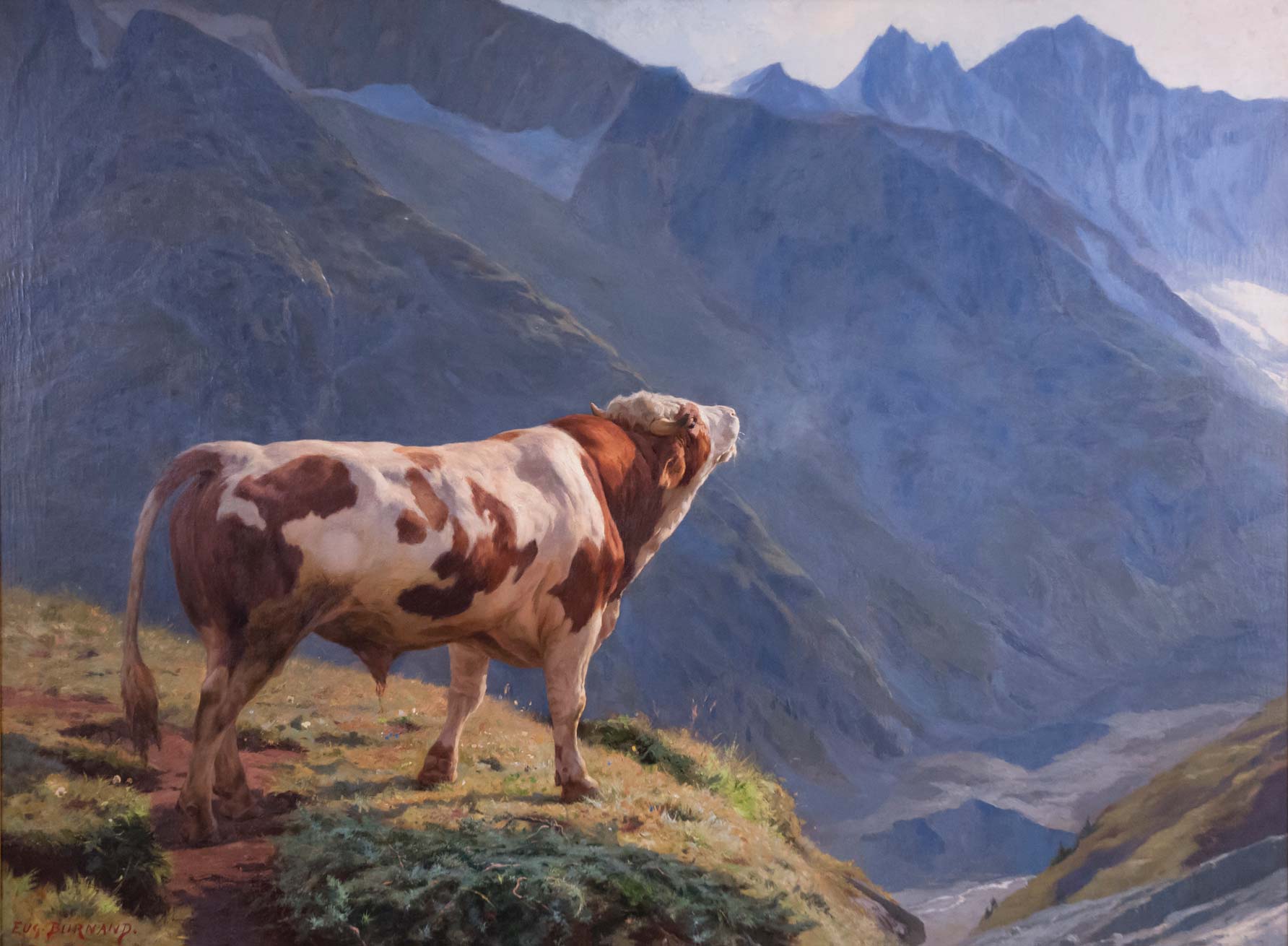
This transformative state experienced in the presence of the natural sublime came to be extolled as a cornerstone of art, culture and authentic individualism in the Romantic era’s reaction against rationalism and industrialization. The attraction to alpine regions provoked by the nature cult of Romanticism was reflected in the era’s medical culture. In the 1860’s, as tuberculosis ravaged Europe, physician Alexander Spengler established the first of many alpine health spas where patients were prescribed a regimen of dry weather, fresh mountain air, bright sunlight, mineral baths, and raw milk to treat the disease. (Fahy 2016)
Spengler, a former revolutionary, who had stood at the barricades of the Grand Duchy of Baden in 1849 as a lieutenant fighting for a new political system, arrived in Switzerland as a political refugee. He was able to study medicine in Zurich and was subsequently stationed as a community doctor in the remote mountain village Davos in 1853. (Piatti 2019) Observing the vitality of the town’s population and the absence of tuberculosis, Spengler speculated that their lifestyle, diet and local environment were the determining factors of their vigorous health. (Fahy 2016)
In Davos the use of milk products was prominent not only in the everyday diet but also in local medicine; “the Swiss often combined the use of milk and milk products with mineral waters to treat consumption and other respiratory illnesses. In some places the practice of the milk cure led to the development of localised tourist infrastructures as, for example, in the village of Davos in the Grisons [a.k.a. Graubünden], which acquired a reputation for cowshed cures" (Steward 2009).
The Milchkur originated in folk medicine and had been available commercially to visitors in the mountain villages of the Canton of Graubünden as early as 1730. At the height of its popularity in the 1800s this health tourism supported more than thirty milk spas. (Reichen 2012) In these locales the cows were esteemed for more than just their milk. Their presence in proximity to the convalescent was believed to impart a natural vitality. "In a cowshed the air including animal breath and body vapour was inhaled. The warmth and ammonia gases given off by the animals’ urine was supposedly a balm for infected lungs.” (Barton 2013, 2)
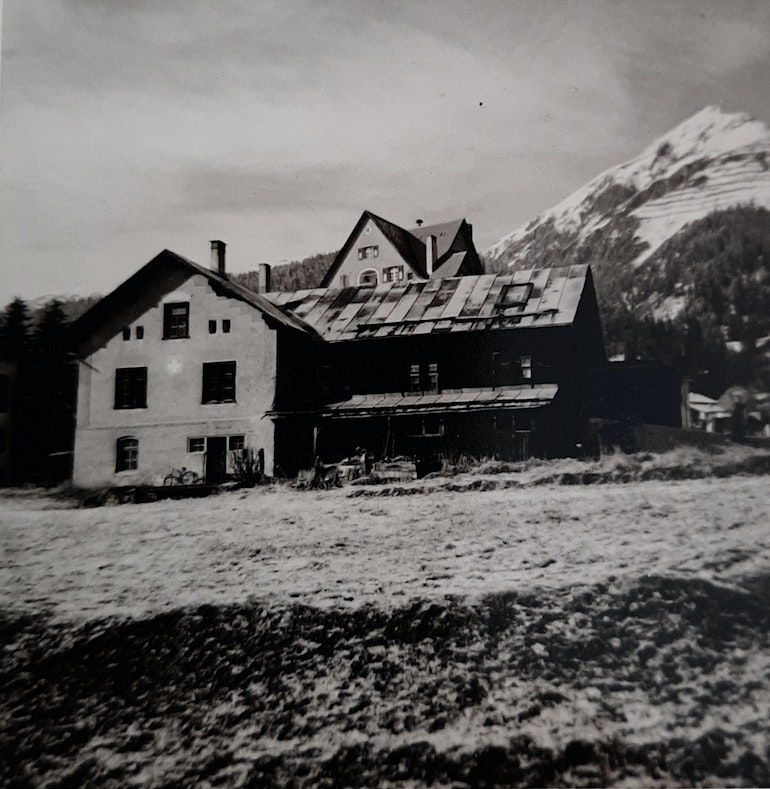
In 1865 Spengler established a small clinic at a farmstead and began receiving tuberculosis patients for treatment, among them physician Friedrich Unger, and his companion, publisher Hugo Richter. (Fahy 2016) (Bäni 2016) His clinic institutionalized many of the folk practices from the region, including the raw milk diet, exposure to fresh air and sunlight, and even ‘stabulation’ (which involved long stays in cowsheds). (Piatti 2019)
Following the success of Spengler’s initial farmstead treatments he received financing from Dutch industrialist Willem Jan Holsboer to build the first alpine sanatorium in 1867. (Medizinmuseum Davos 2017, 4, 7) This led to rapid construction of dozens of sanatoria replicating Spengler’s model in Davos and throughout the region. (Bäni 2016)

These retreat centres came to occupy a powerful symbolic and quasi-religious position in the culture of European Romanticism. As medical evidence for the efficacy of spa treatments grew, people began to visit spas regularly or even took up permanent residence, creating expatriate mountain communities. In this utopian microcosm of Europe culture French, German, British and Russian guests would dine at adjacent tables even as the World Wars raged in the lowlands. “Throughout the nineteenth century, princes and chancellors, writers and artists, and even workers and artisans fled Europe’s overcrowded cities in search of good, fresh mountain air that they hoped would restore their health, strength, even sanity. The romantic celebration of the countryside that emerged in this era of urbanization and concentration of industry in metropolitan Europe converged with a growing conviction that physical health and mental health were intrinsically connected.” (Frank 2012, 197)
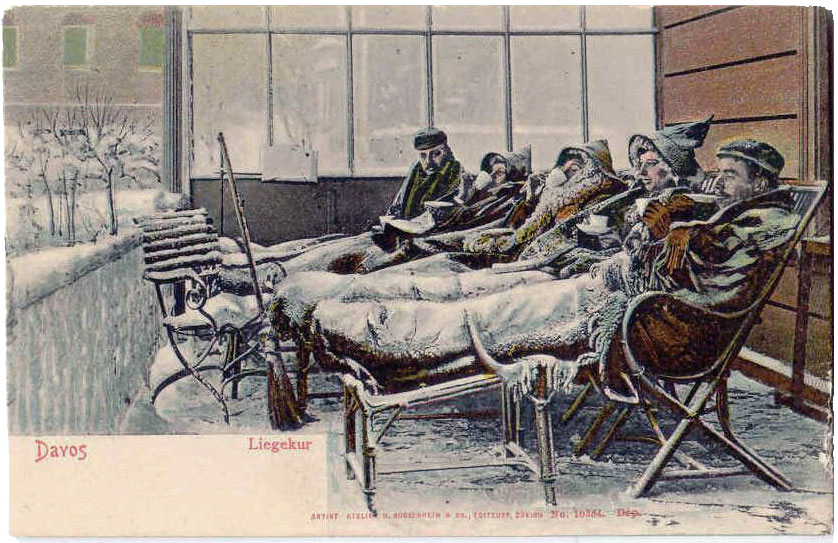
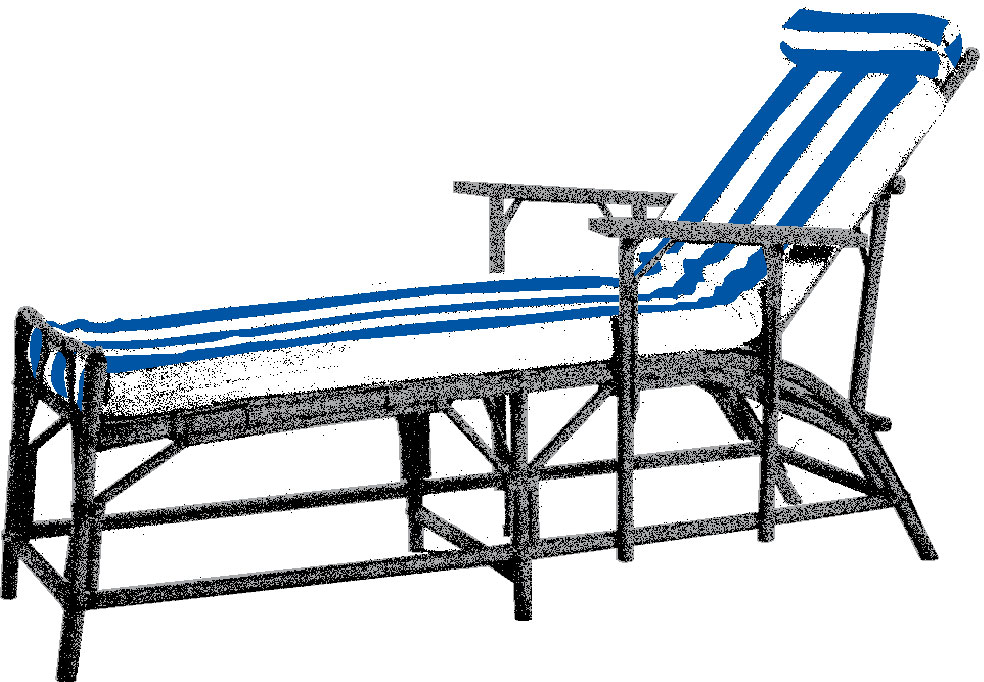
Through the rituals of its health regimen and its proximity to the rarified air of the mountain peaks the alpine spa provided a highly structured encounter with the sublime and vital powers of pure nature in order to mitigate against the corrupting effects of urban life. The mountains were believed to offer renewed mental and physical health, and even spiritual rebirth. (Frank 2012, 190–1, 195, 197, 202) "In their pursuit of health and welfare, patients and doctors placed their confidence in the great powers of water and milk. … In the spas, sited between nature and culture, people drank milk to absorb the inexhaustible energies of life and to suck at civilisation’s breast.” (Duhart & Tamarozzi 2003, par. 15)
Offering a philosophical gloss on such mystical sentiments Fortunato Tamburini in 1846 published a theory founded on an “incorporation principle,” maintaining that milk concentrates the virtues of grazed plants and permits consumers to assimilate them. This reflects the idea that foodstuffs provided nourishment not only to the body but also to the psyche, a common belief during the Romantic era. Tamburini also insisted on the importance of freshness: dairy foods had to be consumed very quickly upon production if they were to produce all their beneficial effects. (Duhart & Tamarozzi 2003, par. 9–11) This strengthened the perceived unity between the milk and its locale of production. Through consuming the milk at its source the visitor was able to participate materially and spiritually in the terroir of its region, and by extension imbibe the Romantic sublime of the alpine landscape.
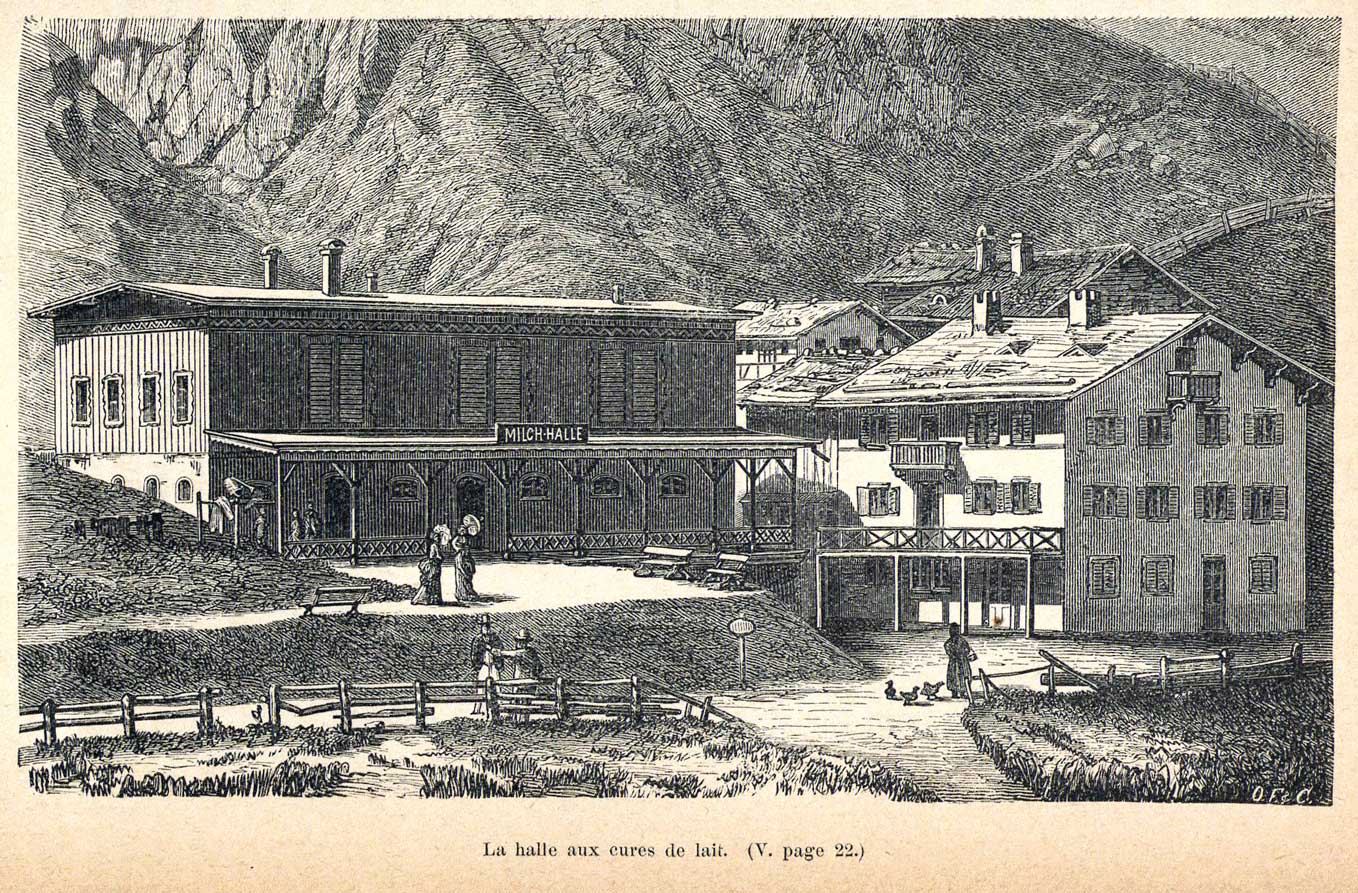
Tamburini’s incorporation principle may sound highly speculative, if not fantastically alchemical, but clearly cow milk does in fact contain nutrients that the cow has extracted from the grass and concentrated by means of her gastrointestinal apparatus. On the alp the cow resides within the forbidding and inhospitable alpine environment, grazing day and night in remote mountain pastures and passes, but returns every morning and evening for a brief visit to the farm to be milked. So in a material, physiological, and also symbolic capacity the cow lives as an intermediary between the mountain realm of the Romantic natural and the domestic domain of human culture.
The practice of the Milchkur is by definition a site-specific activity as the milk must be consumed raw at the moment of production and among the animals, people, topography, air and aromas of its origin. The treatment was believed to yield its effect precisely because the milk is consumed in proximity to the material, social, historical and spiritual conditions of the site, and because the cow is able to condense these conditions into a form that can be incorporated into the body. In this sense the Milchkur is one of the most intimate experiences of site possible.
To stage a Milchkur today activates these conditions within the experience of the participants in a form that is directly present to the senses. Although encompassing a complex experience beginning with a journey into the alpine, the edge of the habitable topographic zone, the Milchkur revolves around the now commonplace activity of drinking milk. This comes alive to the senses in the remarkable aroma and texture of fresh alpine milk, a wholly different experience from the processed and packaged product one finds in a grocery store, especially when consumed at the cowshed of an alpine dairy overlooking the neighbouring peaks and in the company of the cow herself.
The traveller’s journey to the dairy is a lengthy process whereby they are separated from the usual context their daily life by both distance and time. The final approach to the cowshed is typically on foot and traverses the pastures of the milk’s origin. The journey functions as an important framing device to psychologically prime the traveller, as Thomas Mann observed (1924, 4), and to reinforce the continuity between landscape and milk. This psychological and material continuity is further reinforced by the arrival of the cow and the milking performance that brings forth a liquid striking in the brightness of its white opacity. To drink the milk in the presence of the animal that produced it shapes the experience profoundly. The encounter with the cow, a presence that feels familiar but simultaneously alien and impenetrable, is affecting. It’s hard not to feel a sense of wonder and mystery, the same sentiment that motivated Brockes to describe this experience 280 years ago.
References:
Addison, Joseph. 1712. Spectator, vol. 2, no. 412, June 23, 1712. Accessed September 29, 2019. http://www.gutenberg.org/files/11010/11010-h/11010-h.htm#section412
Addison, Joseph. 1773. Remarks on Several Parts of Italy etc. in the years 1701, 1702, 1703. Accessed September 29, 2019. https://archive.org/details/remarksonseveral00addi/page/260
Bäni, Walter. 2016. “Davos – from high-altitude sanatorium to world-renowned holiday destination and economic capital.” Aspetar Sports Medicine Journal, Volume 5, Issue 1 (May): 194–200.
Barton, Susan. 2013. “The Search for Health in the High Alps of Switzerland: Sanatoria Treatments in Davos and Leysin.” Conference proceedings, Rural History 2013, University of Bern, Switzerland. Accessed December 4, 2018. http://www.ruralhistory2013.org/papers/4.2.3._Barton.pdf
Brockes, Barthold Heinrich. 1735–48. “Die Heerde Kühe.” Translated by Doris Ecker in Cow: a Bovine Biography by Florian Werner. Vancouver, Canada: Greystone Books.
Di Falco, Daniel. 2018. “With Rousseau on his ‘Thrill Walk’.” Swiss Review, July 31, 2018. https://www.revue.ch/en/editions/2018/04/detail/news/detail/News/with-rousseau-on-his-thrill-walk/
Duhart, Frédéric, and Federica Tamarozzi. 2003. “Milk in Pyrenean and Corsican spas: discourses and practices from the eighteenth century to the early twentieth century.” Anthropology of Food 2, September 2003. Accessed December 10, 2018. http://journals.openedition.org/aof/312
Fahy, Jo. 2016. “Tuberculosis and Davos. A breath of fresh air for an alpine village.” SWI, Swiss Broadcasting Corporation. January 19, 2016. Accessed August 5, 2019. https://www.swissinfo.ch/eng/society/tuberculosis-and-davos_a-breath-of-fresh-air-for-an-alpine-village/41896580
Frank, Allison F. 2012. "The Air Cure Town: Commodifying Mountain Air in Alpine Central Europe.” Central European History 45 (2012): 185–207. Cambridge University Press.
Haller, Albrecht von. 1729. “Die Alpen.” In Die Alpen und andere Gedichte, 2–22. Stuttgart: Philipp Reclam jun.
Mann, Thomas. 1924. The Magic Mountain. Translated by H. T. Lowe-Porter. London: Secker & Warburg.
Medizinmuseum Davos. 2017. Die Anfänge des Kurortes Davos Aufstieg und Schicksal der Davoser Heilstätten. Accessed September 16, 2019. http://docplayer.org/32218076-Medizi-n-m-useu-m-die-anfaenge-des-kurortes-davos-aufstieg-und-schicksal-der-davoser-heilstaetten-1-die-anfaenge-als-bade-und-sommerkurort.html
Piatti, Barbara. 2019. “The German doctor who created Davos.” House of Switzerland, April 18, 2019. https://houseofswitzerland.org/swissstories/history/german-doctor-who-created-davos
Reichen, Quirinus. 2012. “Molkenkur.” Historisches Lexikon der Schweiz, April 2012. http://www.hls-dhs-dss.ch/textes/d/D28710.php
Rousseau, Jean-Jacques. 1761. Julie, or the New Heloise. Amsterdam: Marc-Michel Rey.
Rousseau, Jean-Jacques. 1782–1789. Confessions.
Steward, Jill. 2009. Review of Healthy Living in the Alps: the Origins of Winter Tourism in Switzerland, 1860-1914, by Susan Barton. Reviews in History, review no. 796. Accessed December 4, 2018. https://reviews.history.ac.uk/review/796
Wyder, Margrit. 2003. Kräuter, Kröpfe, Höhenkuren: Die Alpen in der Medizin – Die Medizin in den Alpen. Basel: Verlag Neue Zürcher Zeitung.
Special thanks to Timothy Nelson, Director of the Dokumentationsbibliothek Davos